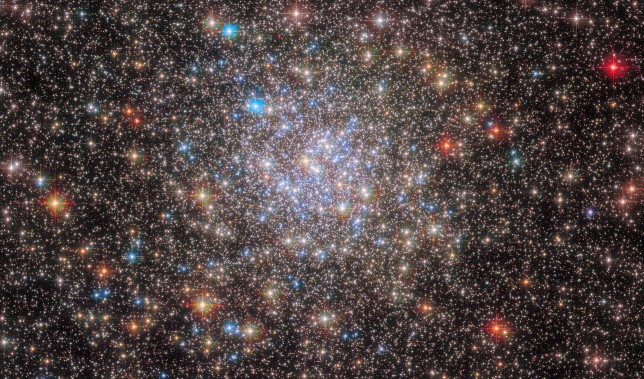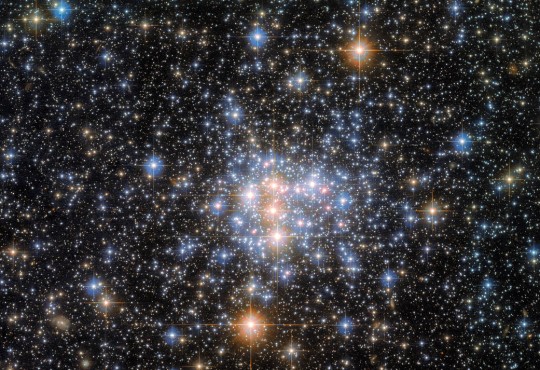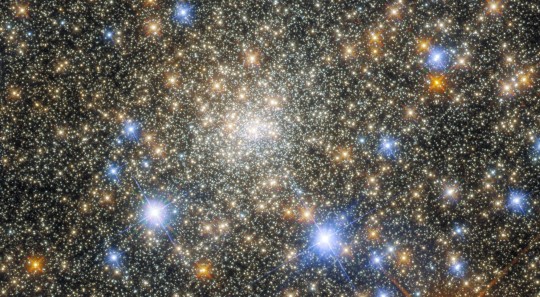Nasa’s Hubble telescope is known for sending back images of star clusters and the most recent one is a dazzling find.
On Friday, Nasa released an image of a globular cluster called NGC 6355 snapped by the Hubble Space Telescope, showing a blanket of thousands of stars.
NGC 6355 is a galactic globular cluster that resides in our Milky Way galaxy’s inner regions.
According to Nasa, the globular cluster is less than 50,000 light-years from Earth, located in the constellation Ophiuchus.
Globular clusters are stable, tightly bound groups of tens of thousands to millions of stars that are associated with all types of galaxies.
‘Their dense populations of stars and mutual gravitational attraction give these clusters a roughly spherical shape that holds a bright, central concentration of stars surrounded by an increasingly sparse sprinkling of stars,’ said Nasa in a statement.
‘The dense, bright core of NGC 6355 shines in crystal-clear detail as Hubble is able to resolve individual stars in the crowded area toward the center of this image,’
Hubble has revolutionized the study of globular clusters. It is almost impossible to distinguish individual stars in globular clusters with ground-based telescopes. Its unique capabilities and vantage point above Earth’s light-distorting atmosphere allow it to capture a globular cluster’s constituent stars in detail.
The 30-year-old Hubble Space Telescope continues to peer out into the cosmos and remains one of the key instruments for examining cosmic objects in the visible light range.
Just last July, Nasa’s Hubble captured an image of a globular cluster of stars called Terzan 2.
While the James Webb telescope might have stolen Hubble’s thunder recently, the older telescope continues to deliver important insights into space.
Last year, the Hubble Space Telescope spotted the largest icy comet ever seen by astronomers.
The telescope completed 30 years of operation in April 2020 and is predicted to retire around 2030–2040. For now, it shows no signs of stopping.
MORE : Nasa’s Hubble telescope captures globular cluster of stars in latest image
MORE : Hubble spots ‘missing link’ between the earliest galaxies and supermassive black holes












